From a modest fishermen’s breakfast to pricey menu darling, the evolution and origins of shrimp and grits, one of the South’s most iconic dishes
In 2016, I embarked on a three-year adventure for the sake of grits.
I crisscrossed the region in search of farmers, millers, chefs, and home cooks who could share their stories about the Southern staple to publish in my book Grits: A Cultural and Culinary Journey Through the South, which came out last November. Of all of my rabbit-hole wriggling and deep-dive researching, the story and origins of shrimp and grits captured my attention most.
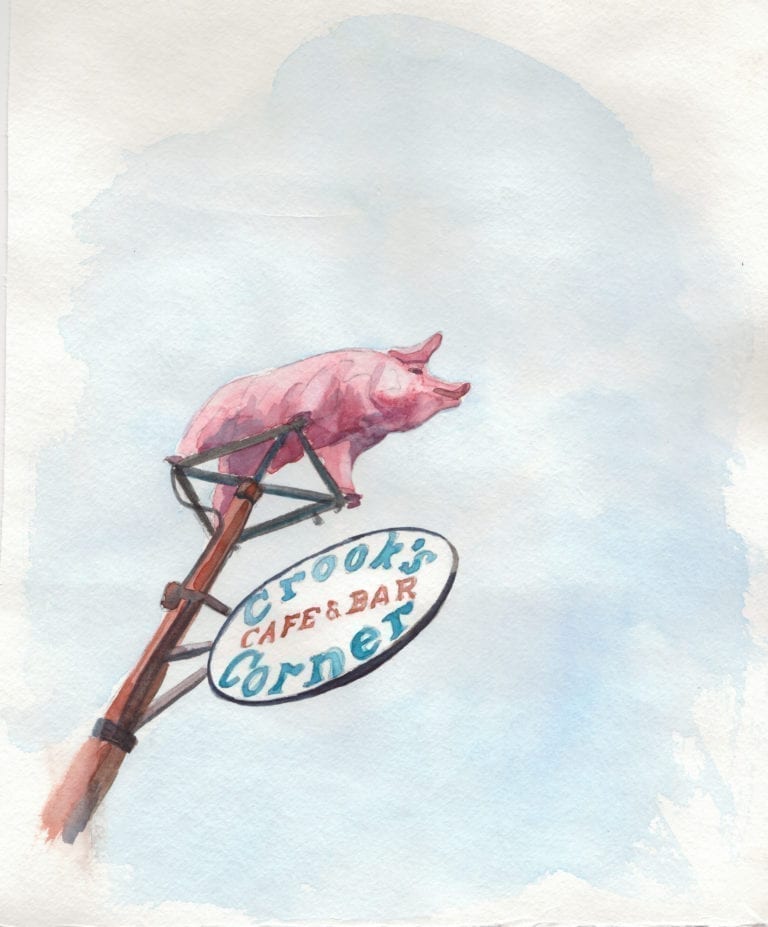
My path to understanding this now iconic dish began at Crook’s Corner, where it’s been on the menu since the 1980s. The shrimp and grits at the venerable Chapel Hill, North Carolina, restaurant is a busy pile of food. The bacon is abundant, as are the mushrooms, big slices of mottled brown. A lemon garnishes the plate to be squeezed over the whole of it. The pink edges of the shrimp peek out, begging to be unearthed. They offer up the faintest crust from a quick turn in a hot pan, and a hint of bacon-y smoke.
On my first visit to Crook’s, I dip my fork deep into the mound to pull up a small pile of grits. The cheese is prevalent, but the corn flavor, not so much. The grits are mostly a vehicle for the flavorful gravy, a blank canvas upon which the smoky, salty brush strokes stand out. I ration the shrimp into pieces so I can get a small amount onto every bite. The grits remain a steady, filling baseline for all of the flavors about them.
I’m deep into the dish when chef Bill Smith shows up at my table wearing his uniform: a worn-out t-shirt and a ball cap. He tells me his kitchen staff still prepares the same recipe that appeared on the menu nearly forty years ago.
It’s this very version that alighted shrimp and grits into the Southern culinary canon. But, as I would learn along my journey, there were many variations—and an entire storyline—that came centuries before.
History of Shrimp and Grits
Theories abound on how creek-caught shrimp and grits first came together. Many pin the dish’s origins to the Lowcountry, where it was once called shrimps and hominy or breakfast shrimp. (Some in that region call cooked grits hominy. But hominy is actually very different product made from corn that has been nixtimalized, or soaked in a lye-based solution to remove the hull of the kernel—think posole.)
But, like so many Southern dishes, the real story of shrimp and grits goes back much further—and embodies the painful past of slavery. For the book, I spoke with Michael Twitty, food historian and author of the James Beard award-winning The Cooking Gene. I’d heard him speak during the 2016 Southern Foodways Alliance Fall Symposium, where he gave a talk titled “Black Corn,” which traced the roots of several corn-based dishes back to Africa. During the talk, he boldly declared, “I don’t care what anyone says; shrimp and grits came from Mozambique.” The statement came with backup—he told of dishes from that country involving corn and shellfish, a combination that appeared long before anyone in Charleston was eating it for breakfast.
Like other dishes and uses for specific ingredients, the combination was carried in the minds of the enslaved who were forcefully brought to the New World during the centuries of the transatlantic slave trade. Because much of that trade landed in the Charleston and other Southern ports, it makes sense that the dish gets pinned to the region. But the threads that should connect today’s shrimp and grits to those African origins have all but disappeared.
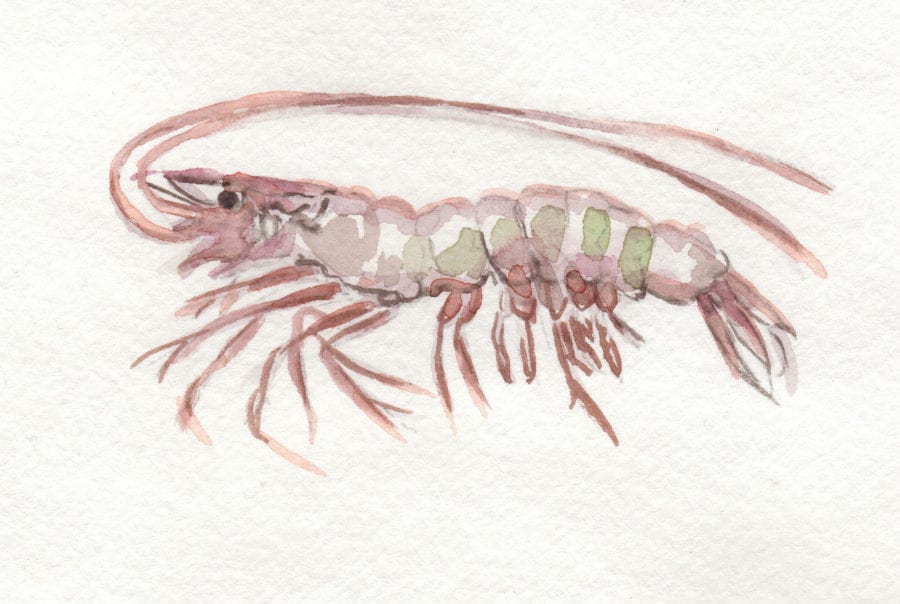
Deciphering the Origins of Shrimp and Grits
From those beginnings, the dish eventually moved into the plantation kitchens of the Lowcountry.
Recognition of the dish’s origin and those who carried it from humble cooking methods to restaurant tables, begins to paint a more pointed picture of Southern cuisine as a whole. Most of the dishes we identify as Southern, iconic, and classic, like shrimp and grits, are the result of mixed cultures and influences. It’s not a comfortable history, but it’s one that needs to be acknowledged.
The fact that the dish was easy to prepare—ground corn cooked down in water, shellfish heated and placed on top—made it a natural staple for a laborer’s diet. A few cups of ground corn might have been part of a weekly ration. Creek shrimp could be hand-caught, unbeknownst to the distributor of rations. Those who worked as fishermen in the Lowcountry would often go out for long hauls—twelve- or twenty-four-hour stretches—which required them to bring any necessary provisions out with them on the boat. They’d call it a one-pot, carrying a single pot that contained all their food for the trip. Grits or rice, both cheap and filling staples, would go into the pot, as would whatever they were catching that day. Shrimp, a major provision for South Carolina and Georgia fishermen, would get tossed in, along with a little seawater, and all of it would cook down to a simple, sustaining meal.

Breakfast shrimp was mostly a meal prepared at home, not one found in restaurants. A recipe for the dish appeared in a syndicated column in the Louisiana Review in 1891. And an early Charleston cookbook, Two Hundred Years of Charleston Cooking, which was originally compiled by Blanche S. Rhett in 1930, holds the first book-printed version of “shrimps and hominy.” The recipe is credited to the author’s African-American butler, William Deas, who is said to be 78 years old, and had been eating the dish every morning during shrimp season for as far back as he can remember. While it’s not mentioned whether Deas was born into slavery, given his age it’s likely. The fact that the book credits an African American for that recipe is an acknowledgement not often made in that era. Of course, the Lowcountry wasn’t the only place where variations on the dish gained popularity. In the port city of New Orleans, where various cultural influences merged and mingled, a listing for “breakfast tomorrow” in the May 8, 1895 edition of the Times-Democrat included “Fried Lake Shrimp. Grillade. Hominy.”
Carrying the Tradition
As cookbook author, teacher, and one-time television star Nathalie Dupree wrote in her book, Nathalie Dupree’s Shrimp and Grits Cookbook, “Country-style restaurants in South Carolina in the ’60s and ’70s, bragged they cooked their shrimp and grits in ‘beach water,’ referring to the oft-brackish water found in beach homes. The dish made its way around the region as the years went on. Perhaps in Louisiana they added hot sauce, or cooked up some country ham and made some brown sauce, or added some greens from last night’s supper, and poured all that over the shrimp and grits.” Dupree also brings up the important point that the dish crossed cultures everywhere it went. “Among the Jewish immigrants who settled in small Southern towns a century or so ago, some housewives served grits with fried salt herring, soaked overnight in water to leach out the brine, then fried in butter,” she wrote.
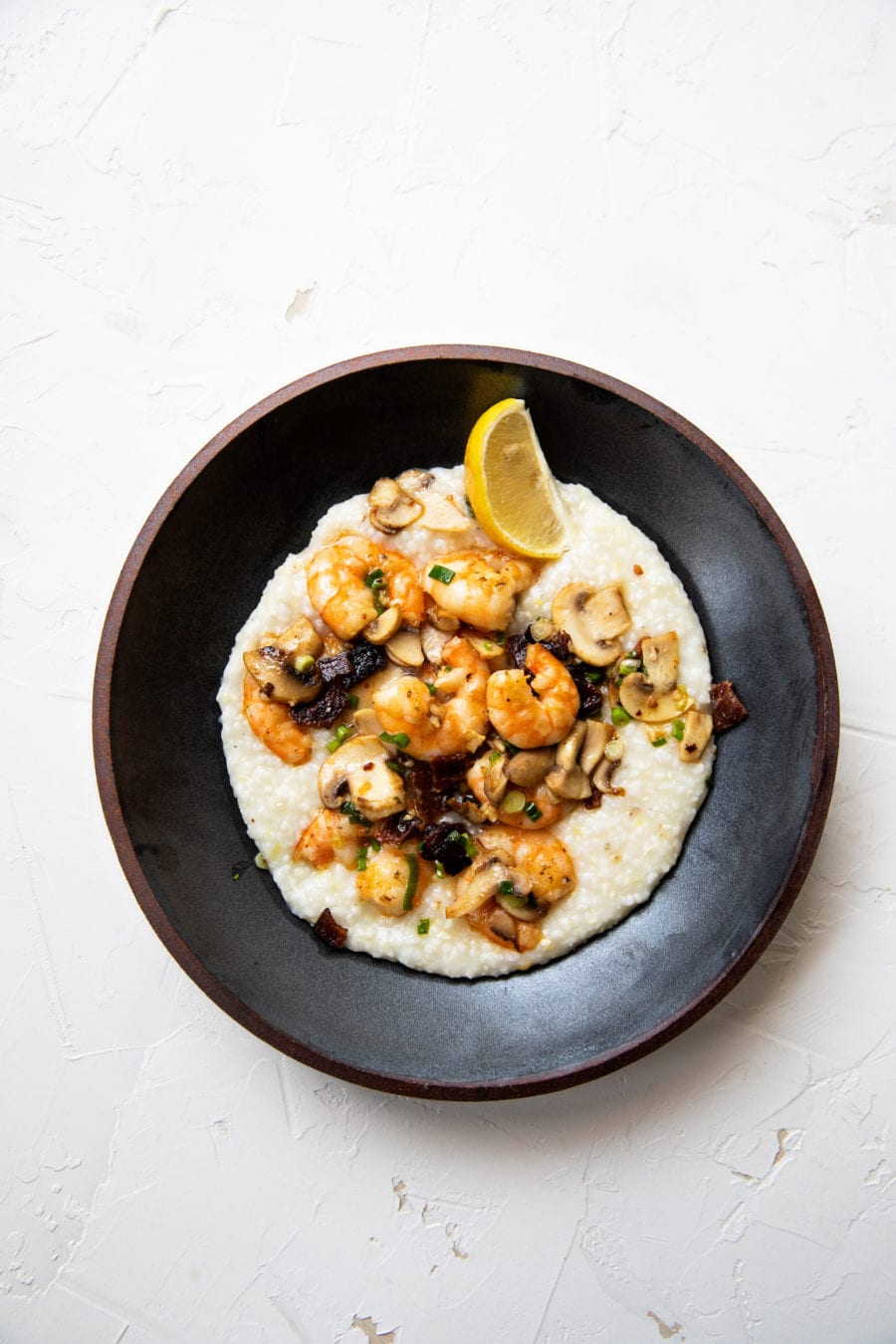
Despite the many hands—black, brown, and white—that prepared the dish over time, it was Bill Neal, a white chef raised in Grover, North Carolina, who, taking inspiration from that original combination of shellfish and ground corn, created a version of the dish that became cemented in the cuisine of the American South. During his early career cooking at La Residence in Chapel Hill, he drew inspiration from French cuisine. He later left La Res to open Crook’s Corner, which began with the same European sensibility. But, in 1984, a visit from a New York journalist caused him to rethink his direction altogether.
Craig Claiborne, longtime food editor of the New York Times, came to town to research an article—he wanted a tour of Eastern North Carolina barbecue and asked Bill Neal to guide him. In spending time with Claiborne, who hailed from Mississippi, Neal started to think more intently about his own cooking style. He’d long celebrated European cuisine and technique, but Claiborne helped him see that his authentic connection to Southern was just as worthy of celebration. A vision was crystallized—Neal decided to devote his attention to Southern food. Shortly after that visit, Neal took a leave from Crook’s to work on a cookbook and hosted Claiborne in his kitchen, inspiring a profile in the Times about the young chef from Chapel Hill, as well as a recipe for Neal’s shrimp with cheese grits. Through the words of Claiborne’s story, and from behind the stove at Crook’s, the dish shot into the culinary mainstream, appearing on menus across the South almost instantly.

Back in Charleston, chef Robert Stehling, who got his start working for Bill Neal before a stint in New York, opened Hominy Grill in the 1990s. Though he’d worked in Charleston long before, and had tried breakfast shrimp it its original form there, he had never once seen shrimp and grits on a restaurant menu.
But suddenly, there it was, shrimp and grits, at every important restaurant in town. Stehling still remembers cooking the shrimp and grits at Crook’s Corner alongside Neal, and recalls that nearly 40 percent of the orders every night included shrimp and grits. At Hominy Grill, he created a similar dish, packed with mushrooms, bacon, and Tabasco.
The Evolution of a Dish
Outside of Charleston, what most people are doing with the dish today is a variation or riff on Neal’s recipe, not the original. In Nashville, at the restaurant Biscuit Love, there’s a dish called the Bill Neal—shrimp with cheese grits, fatback bacon, mushrooms, scallions, and Tabasco. Farther away, the dish has been turned on its head, spiced up, and dismantled or deconstructed, depending on where it’s gone. Seattle’s Toulouse Petit puts fat, wild, Pacific- caught, head-on shrimp in a sauce with fistfuls of black pepper alongside housemade andouille sausage and bits of crawfish. At Ida B’s Table, a modern soul food restaurant in Baltimore, chef David Thomas uses Anson Mills grits and slathers his shrimp in a creole cream sauce, topping it all with pork belly croutons. In Houston, chef Chris Shepherd of restaurants One Fifth and Georgia James might put a red chile–braised Wagyu barbacoa over Hickory King grits. Whatever direction they take, chefs seem to do the same thing Neal did: use the simple, understated flavor of the grits as a vehicle to carry a world of flavors to the diner.
Meanwhile, at Crook’s, Bill Smith announced his retirement late last year—he and owner Gene Hamer are handing the reigns to new ownership, and the kitchen will now be helmed by up-and-comer Justin Burdett. Smith has always dished up nearly the exact same recipe that Bill Neal placed in front of Craig Claiborne more than forty years ago— with two slight changes. Originally, Crook’s sourced its grits from Adluh Flour Mills in Columbia, South Carolina. Now, they use the water-ground Moss White Grits from Buffaloe Milling Company, milled right up the road in Kittrell, North Carolina. And, Smith notes, he doesn’t use nutmeg, even though it was included in the recipe published in Neal’s cookbook, Bill Neal’s Southern Cooking. Burdett has no plans to change the dish, either.
Despite those fancified versions and the many journeys the dish has taken along its path, there are those who still look back to the workingman’s one-pot meal. Stehling says he regularly gets requests for it. “What I serve is really complicated to [some],” he says. When they ask for “just plain shrimp and butter,” he says, “I know exactly what they want.”
Robert Stehling’s Shrimp and Grits
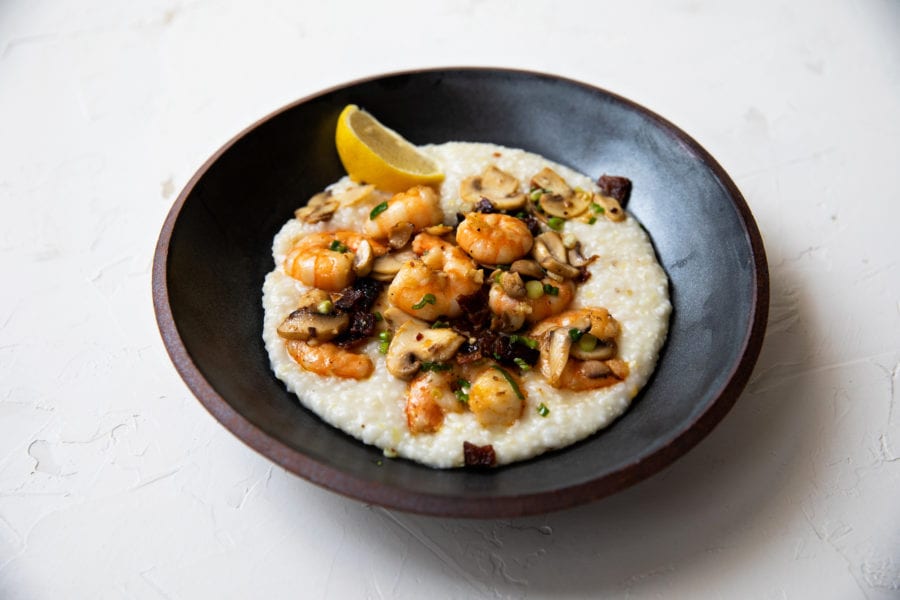
share
trending content
-
New Restaurants in Arkansas
-
Tea Cakes, A Brief History
by TLP Editors -
Gullah Geechee Home Cooking
by Erin Byers Murray -
A Cajun Christmas Menu
by TLP Editors -
The History of Fajitas
by TLP Editors
More From Roots
-
The Pakalachian Food Truck Blends Traditions | Listen
-
Treasuring Time at the Table at a’Verde
-
Remembering Malinda Russell through her Recipes
-
Ricky Moore’s Juneteenth Lunchboxes
-
Hamsa: All Roads Lead to Israel





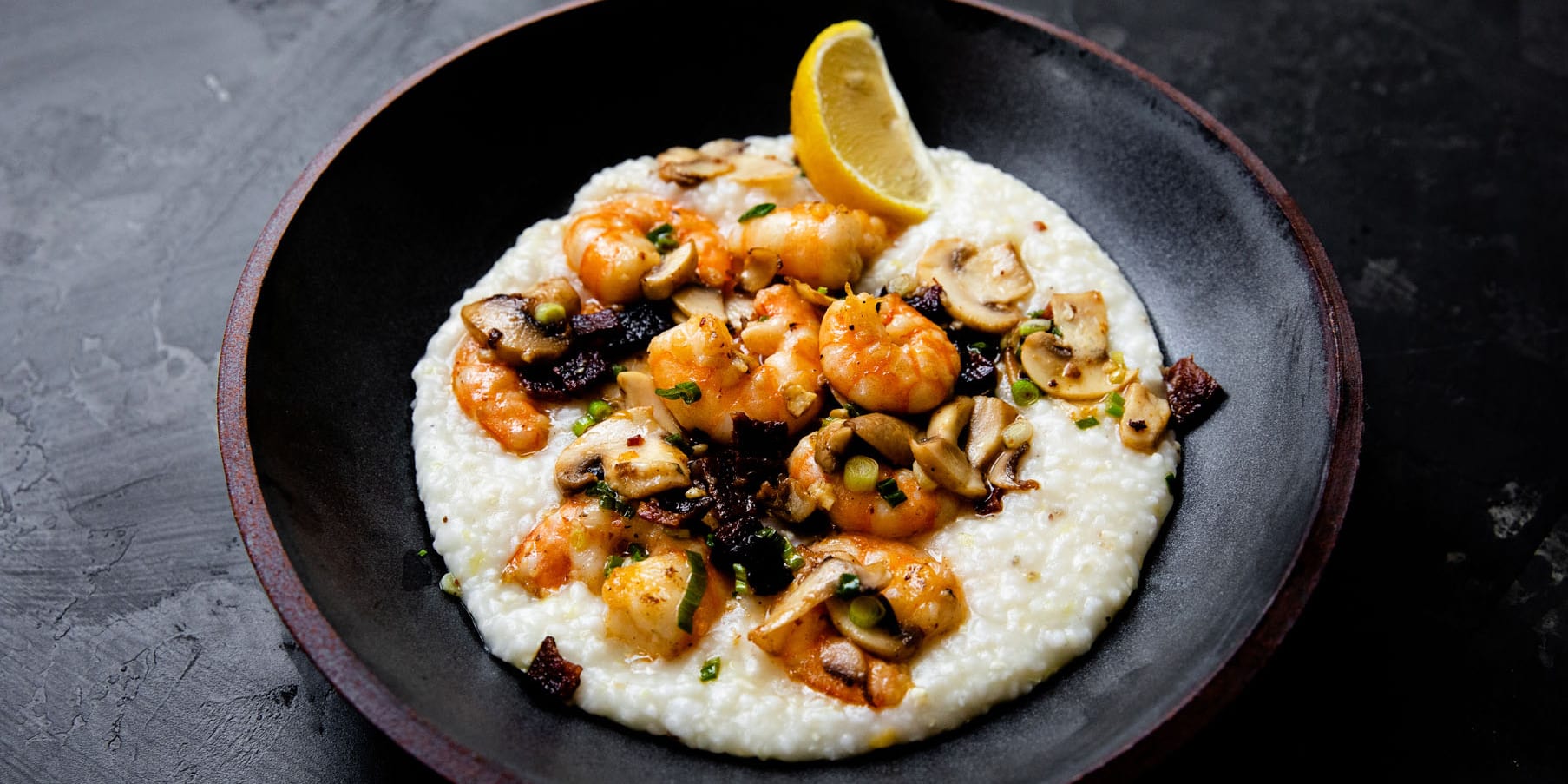
Comments 2
This is a wonderful article for me to find as I’m researching the history of shrimp ‘n’ grits and coming up with my own version. I always thought it was a Louisiana / New Orleans thing, as that’s where I first encountered this masterful combination. The thoughtful reflection of the dish’s entire history is illuminating and much appreciated.
My dad, born 1918, remembers his mother, who grew up in Yemesee SC, making him shrimp and grits when he was a child. Certainly not as complex as Bill Neals.